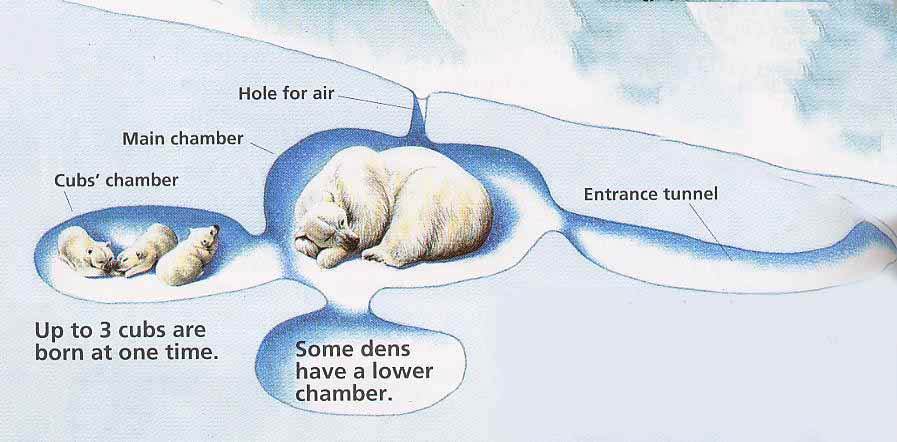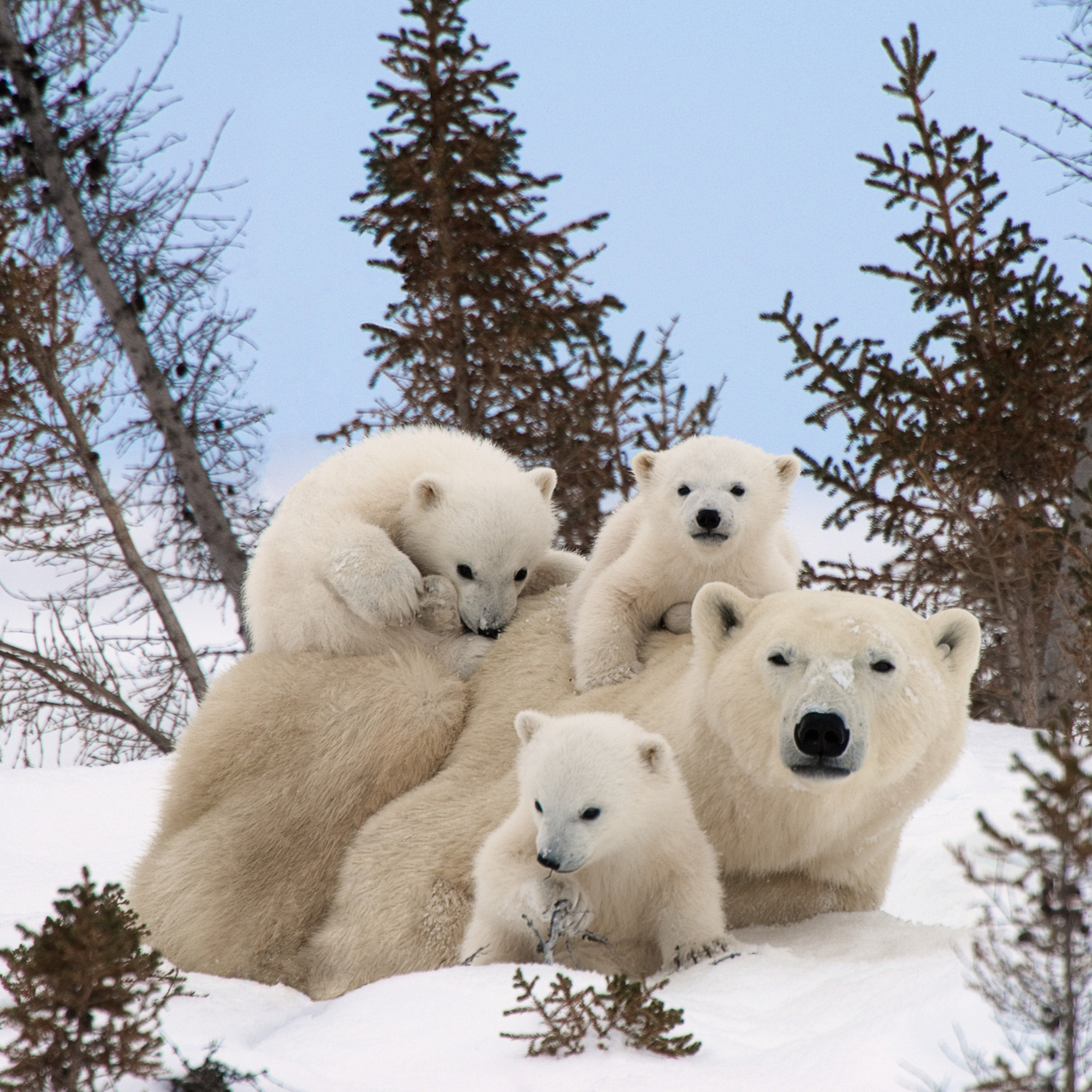A baby polar bear is the cutest animal to roam the Arctic tundra. Growing from only 2 pounds, up to 400 within 2.5 years – Amazing !
Baby Polar Bears
Once a female has mated, she will need to gain at least 440 pounds so she can carry out a successful pregnancy. Sometimes they will even DOUBLE their body weight to carry out their pregnancy. Between August and October, Mothers will spend their pregnancy in search for an area to build a den to keep their newborns protected from the harsh outside temperatures.
After 125 – 265 days (around eight months) of pregnancy, a mother will give birth to their cub(s). Female polar bears can have up to 3 cubs at one time. Birthing season is anywhere from November to January. They are born with their eyes closed, but they open within a month. Polar bears also have very fine hair at birth, so they rely heavily on mother for warmth.

Early Months
During the early months, cubs never leave their mom’s side because they’re always nursing or needing warmth. A baby nurses up to six times a day for around two and a half years. A few months after their birth, typically March or April, mothers will begin exposing cubs to new environments. This exposure comes after the baby has adapted to cold temperatures and developed enough muscle to walk.
Den
The female polar bear will give birth to their young in the dens they created. They will then stay within the den for the next three months. After a cub’s first exposure to the outside world, mama and baby will continue to utilize the den for several days until the baby is prepared to leave.
Leaving the Den
The pair eventually leave their den so the cub can be taught how to hunt and eat solid foods from their mother’s kill. A baby’s success rate for hunting is low for their first year. Baby polar bears should reach around 100 pounds by the time they reach eight months of age. As the baby learns how to hunt and eat they will put on over 300 pounds, weighing around 400 pounds by two years.
Grown up
When a cub reaches the 30-month-old marker, the polar bear mother is ready to leave baby. During this point, the cub is challenged to test all the skills they have been taught to survive on their own.
Baby Polar Bear Size
Weight
Polar bear babies are born at around 2 pounds. This is similar to the weight of a pineapple. Before the babies leave their den, they can gain over 30 pounds. A baby polar bear needs to put on 100 times its birthweight by the time they are ready to survive on their own at around two and a half years.
To learn more about their weight, click here!
Height
At birth, polar bear cubs are about 30 cm in length. 30 cm is equivalent to a size 12 men’s shoe. Male cubs are usually slightly bigger than female cubs.
To learn more about their height, click here!

Fun Fact:
Polar Bears are the world’s LARGEST species of bear.

Fun Fact:
The temperature inside a den can get up to 45 degrees Fahrenheit warmer than outside temperatures.

Baby Polar Bear Fur
Young cubs have thin fur and rely heavily on mama to keep warm. As newborns, they appear hairless because their fur is so fine. Recently researchers discovered that wolves have learned how to hunt polar bear cubs, but once their “white” coat comes in, cubs will be able to better camouflage from their predators.
To learn more about their fur, click here!
Learning to Hunt
When a mama and cub are together, their most used method of hunting is Stalking Birth Lairs. These birth lairs are attached to land and are where seal pups reside. Mama and cubs use this hunting method because it avoids the crossing of water as well as any interaction with male polar bears since they do not hunt birth lairs.
To learn more about hunting, click here!
Diet
Polar bear cubs rely on their mothers for ALL their nutrients in the early months. They can even end up nursing up to six times a day.
After leaving the den, cubs will gradually learn how to eat solid food. They will consume anything their mom kills.
To learn more about their diet, click here!

